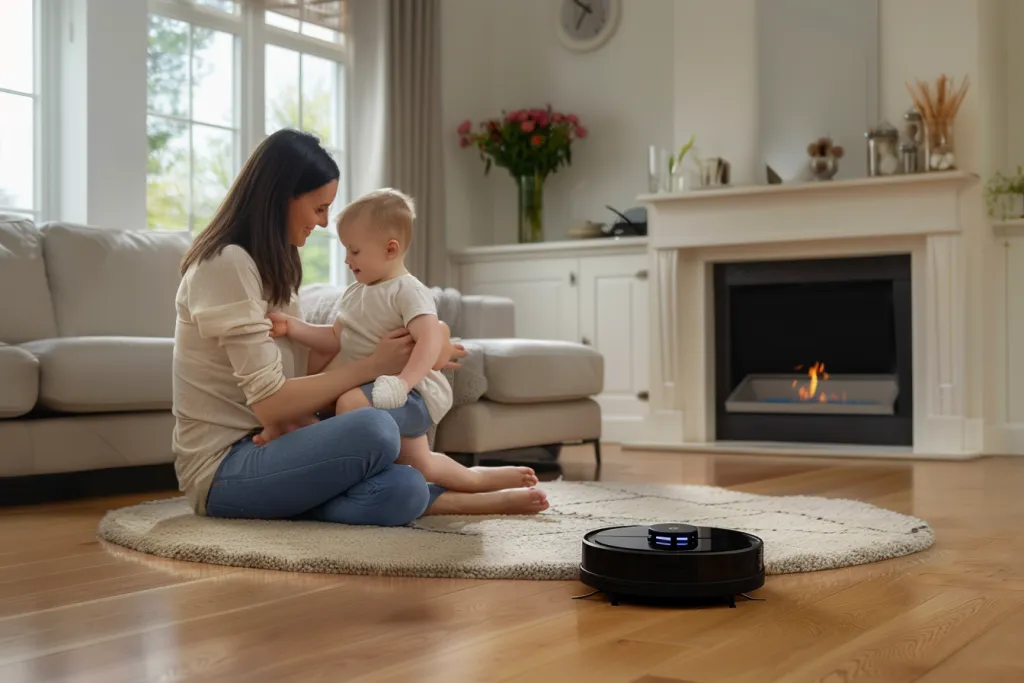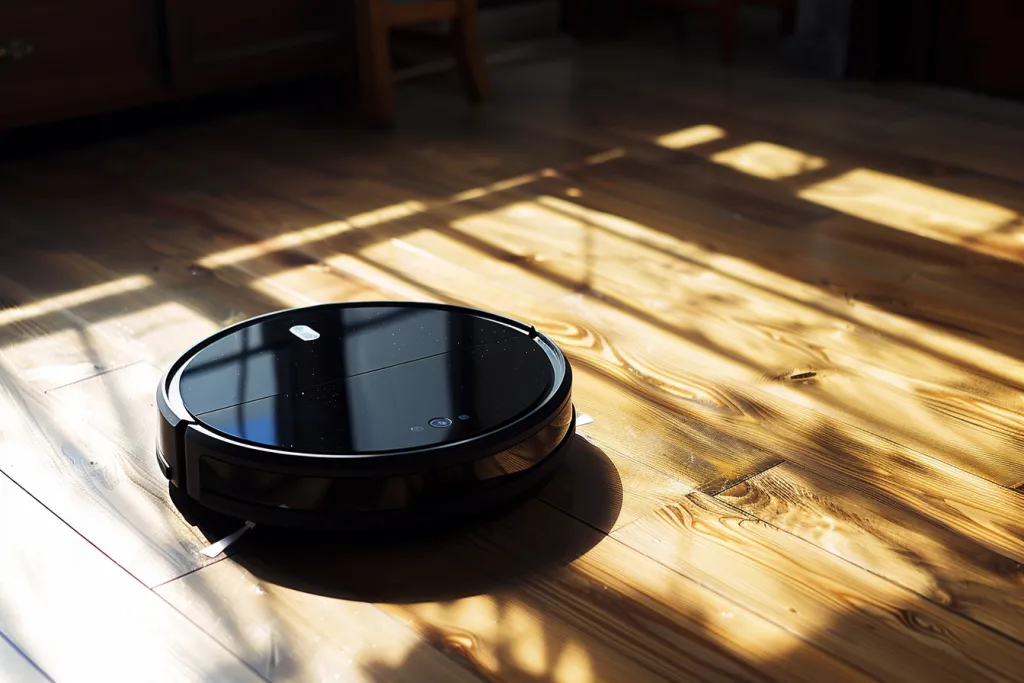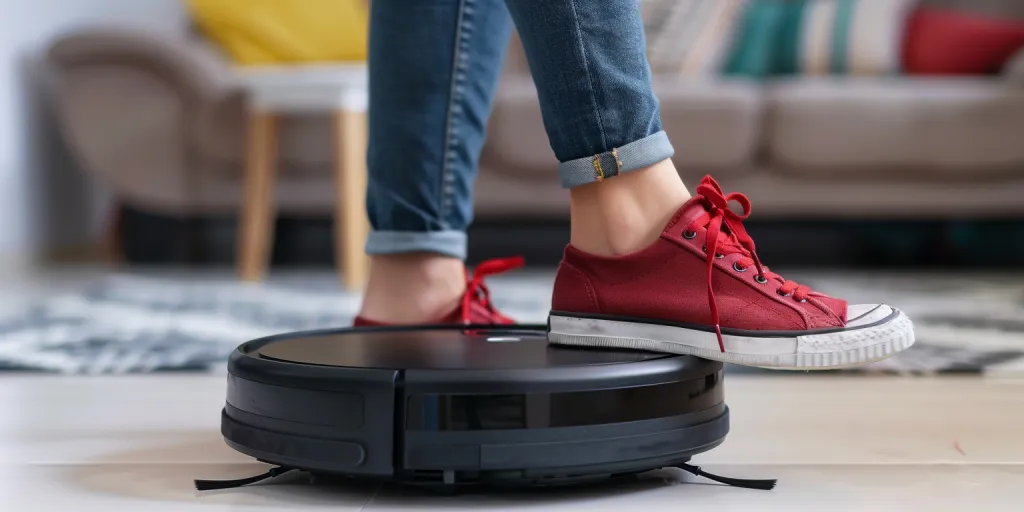In an era where convenience and efficiency are paramount, the advent of robot vacuum cleaners has revolutionized the way we approach household cleaning. Gone are the days of manual sweeping and vacuuming; these intelligent machines offer a hands-free solution to maintaining a clean home. This article delves into the core aspects that make robot vacuum cleaners an indispensable tool in modern living. From understanding their sophisticated navigation systems to evaluating their cleaning efficacy on various surfaces, we aim to provide a comprehensive overview that addresses the primary concerns of potential users.
Table of Contents:
– Understanding the technology behind robot vacuum cleaners
– Assessing cleaning performance on different surfaces
– Battery life and power management
– Smart home integration and ease of use
– Maintenance and longevity
Understanding the technology behind robot vacuum cleaners

Robot vacuum cleaners are marvels of modern engineering, equipped with a plethora of sensors and algorithms designed to navigate through complex environments. At their core, these devices utilize a combination of infrared and ultrasonic sensors to map out living spaces, avoiding obstacles and optimizing cleaning paths. This section explores the intricate balance between hardware and software that enables these machines to operate autonomously, shedding light on the advancements in artificial intelligence that have significantly enhanced their navigational capabilities.
The role of machine learning in improving the efficiency of robot vacuum cleaners cannot be overstated. By analyzing vast amounts of data collected during cleaning sessions, these devices learn to navigate more effectively, identifying areas that require more attention and avoiding common pitfalls such as stairs and ledges. This adaptive behavior ensures a thorough cleaning process that evolves with each use, showcasing the dynamic evolution of robot vacuum technology.
Moreover, the integration of high-resolution cameras and LIDAR technology has elevated the precision of these devices. These components work in tandem to create detailed maps of indoor spaces, allowing for meticulous planning of cleaning routes and the ability to remember the layout of rooms. This section highlights how the fusion of these technologies results in a seamless cleaning experience, emphasizing the importance of continuous innovation in the field of robot vacuum cleaners.
Assessing cleaning performance on different surfaces

The versatility of robot vacuum cleaners is one of their most appealing attributes, capable of tackling a wide range of surfaces from hardwood floors to thick carpets. This section examines the factors that influence their cleaning efficacy, such as suction power, brush design, and the ability to adjust settings based on the type of surface encountered. Understanding these elements is crucial for users to set realistic expectations regarding the performance of their devices.
Despite their compact size, many robot vacuum cleaners are equipped with powerful motors that generate substantial suction, enabling them to capture fine dust particles and larger debris with ease. The design of the brushes also plays a pivotal role, with some models featuring a combination of bristle and rubber brushes to effectively dislodge dirt from carpets and sweep it into the suction path. This part of the article underscores the importance of selecting a robot vacuum cleaner that aligns with the specific cleaning needs of the user.
Furthermore, the adaptability of these machines to different surfaces is a testament to their intelligent design. Many models automatically detect changes in flooring, adjusting their suction power and brush speed accordingly to ensure optimal cleaning. This adaptability not only enhances cleaning results but also protects delicate surfaces from potential damage, illustrating the thoughtful engineering behind robot vacuum cleaners.
Battery life and power management

Battery life is a critical component that dictates the operational efficiency of robot vacuum cleaners. This section delves into the advancements in battery technology that have extended the runtime of these devices, allowing them to cover larger areas on a single charge. The evolution from traditional NiMH batteries to more energy-dense Li-ion batteries has been a game-changer, providing a balance between power and longevity.
Power management strategies employed by robot vacuum cleaners are equally noteworthy. Many devices feature eco modes that conserve energy during operation, extending their cleaning sessions without compromising performance. Additionally, the ability to return to their charging docks autonomously when battery levels are low ensures that they are always ready for the next cleaning cycle. This part of the article highlights the importance of efficient power management in maximizing the utility of robot vacuum cleaners.
Moreover, the impact of battery life on the overall user experience cannot be understated. Long battery life coupled with fast recharging times minimizes downtime, ensuring that these devices can keep up with the demands of busy households. This section emphasizes the need for users to consider battery specifications and charging mechanisms when choosing a robot vacuum cleaner, ensuring that it aligns with their lifestyle and cleaning requirements.
Smart home integration and ease of use

In the age of smart homes, the ability of robot vacuum cleaners to integrate seamlessly with other devices has become a focal point of interest. This section explores the convenience afforded by features such as voice control through virtual assistants, scheduling cleaning sessions via mobile apps, and receiving real-time updates on cleaning progress. These functionalities not only enhance the user experience but also provide a level of customization and control that was previously unattainable.
The ease of use of robot vacuum cleaners extends beyond their smart features. The design of user interfaces, both on the devices themselves and within accompanying apps, is critical for ensuring that users can access and utilize the full range of features without frustration. This part of the article examines the importance of intuitive design in fostering a positive relationship between users and their robot vacuum cleaners, ensuring that technology serves to simplify, not complicate, the cleaning process.
Furthermore, the role of firmware updates in maintaining and enhancing the functionality of robot vacuum cleaners is discussed. Manufacturers regularly release updates that improve navigation algorithms, introduce new features, and address any bugs, ensuring that these devices continue to meet the evolving needs of users. This section underscores the dynamic nature of robot vacuum technology and the commitment of manufacturers to provide ongoing support and improvements.
Maintenance and longevity

The long-term performance of robot vacuum cleaners is contingent upon proper maintenance. This section outlines the routine care required to keep these devices in optimal condition, such as cleaning brushes, emptying dustbins, and replacing filters. While robot vacuum cleaners are designed for minimal intervention, adhering to maintenance recommendations is essential for extending their lifespan and ensuring consistent cleaning performance.
Moreover, the durability of robot vacuum cleaners is influenced by the quality of their construction and the availability of replacement parts. This part of the article addresses the importance of selecting devices that are built to last, with readily available components for repairs if needed. Investing in a robot vacuum cleaner that is both robust and repairable ensures that it remains a valuable asset in the long run.
In addition, the article highlights the environmental considerations associated with the longevity of robot vacuum cleaners. Choosing devices with replaceable batteries and recyclable parts not only contributes to their durability but also reduces electronic waste, aligning with the growing consumer demand for sustainable products. This section encourages users to consider the environmental impact of their choices, promoting a more responsible approach to technology consumption.
Conclusion
Robot vacuum cleaners represent a significant leap forward in home cleaning technology, offering convenience, efficiency, and smart integration. From understanding the sophisticated technology that powers these devices to assessing their performance on various surfaces, it’s clear that they are more than just a novelty. By considering factors such as battery life, ease of use, and maintenance, users can make informed decisions that align with their specific needs. As robot vacuum technology continues to evolve, it promises to remain a staple in the pursuit of a cleaner, smarter home.




